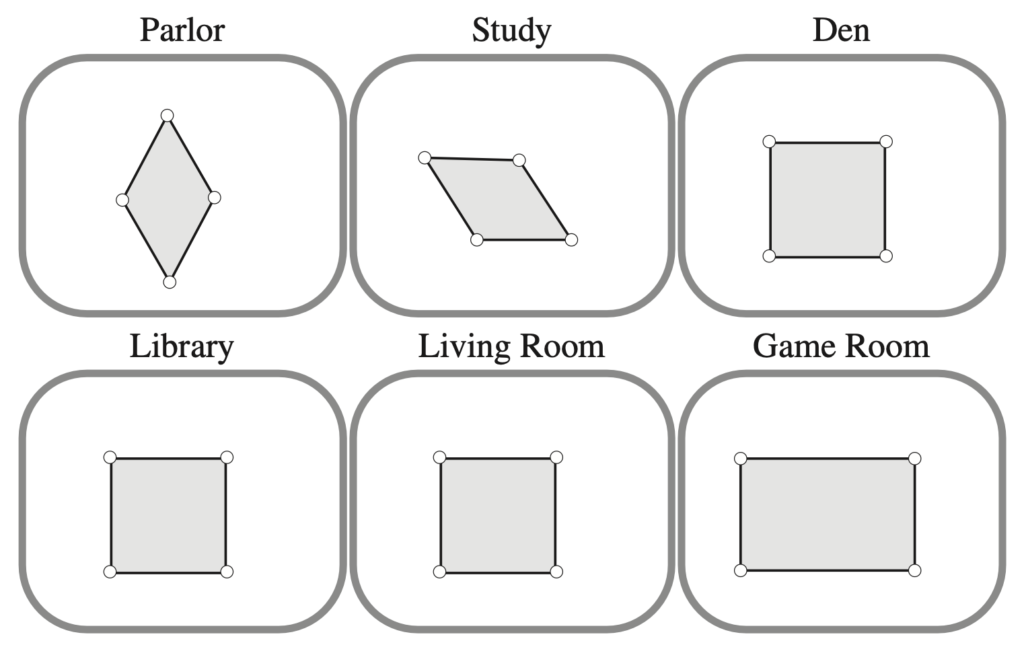What do you get when you cross geometry with the classic murder mystery game Clue? Why, the Mysteries of Polygon Flats, of course!
In my prior post, I offered examples of how Web Sketchpad can help students classify special quadrilaterals like squares, rectangles, kites, parallelograms, trapezoids, and rhombuses by providing “dynamic” models of each shape whose vertices can be dragged. Whereas a static image of a parallelogram leaves much to the imagination, a dynamic version gives students the opportunity to focus on those properties of a parallelogram that remain invariant as its side lengths and angles change.
In his Sketchpad activity module Shape Makers, Michael Battista embellishes and deepens the task of investigating special quadrilaterals by turning these quadrilaterals into characters that reside in the town of Polygon Flats.
Each Mystery of Polygon Flats features suspects drawn from the cast of characters below. Sudha Square, true to her name, is a square that can change her side lengths and orientation, but is always a square. Rectangle Rick is also free to change his appearance, but must remain a rectangle. You can experiment with all of the suspects’ geometric traits by dragging their vertices in the websketch below (and here).
Below, we see a security camera image of six rooms in Quadrilateral Mansion at the time when a theft occurred. We are given some clues to consider:
- The theft took place in the game room.
- At the time of the theft, one person was not in the mansion.
- The people in the parlor and game room always have at least two equal sides.
- The person in the study always has two or more lines of symmetry.
This file, from Shape Makers, includes several more mysteries to solve as well as teacher notes.
Your students can pen their own Mysteries of Polygon Flats by using the websketch below (or here). Ask them to write clues and then drag the shapes into the six rooms, positioning their vertices to cloud one or more of their identities. Students can drag one or more quadrilaterals off the screen entirely if they do not wish to use them. When they’re done, they can download and save their websketch. With some practice, each student can become the Agatha Christie of geometry!

